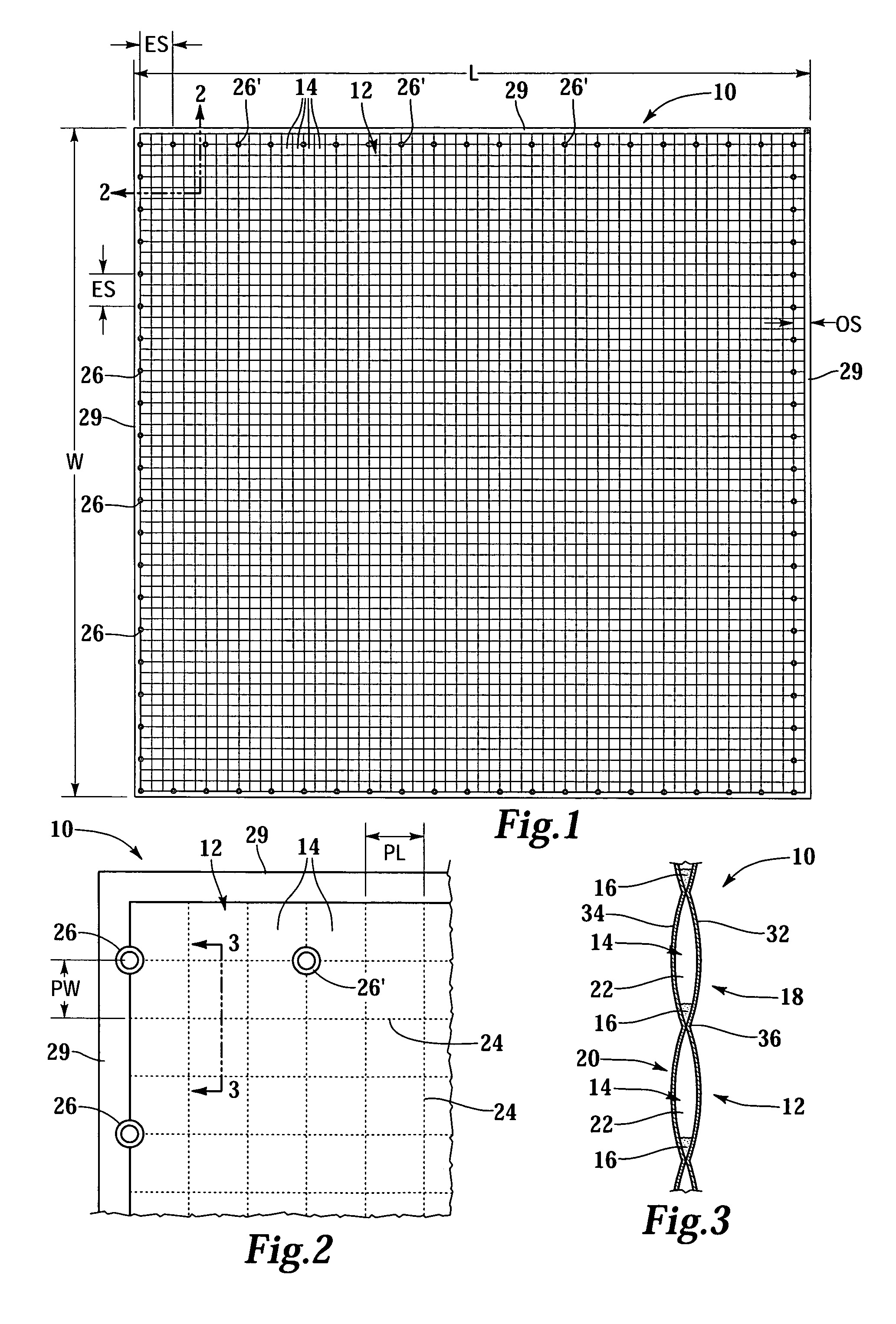Method and apparatus for retarding fire
a technology applied in the field of apparatus and fire retardant, can solve the problems of limiting the amount of water that can be placed on and adhered to the surface of the building, destroying homes, and destroying homes,
- Summary
- Abstract
- Description
- Claims
- Application Information
AI Technical Summary
Benefits of technology
Problems solved by technology
Method used
Image
Examples
example 1
[0069]Two small, substantially identical piles of wood two-by-twos, or “houses,” are erected proximate each other on a grass field. One house is an experimental house which is to be protected by a fire-retardant barrier and the other is a control house which is to be left unprotected. Each house is constructed from 18 two inch-by-two inch wood blocks, each block being about 6 inches long. The blocks are stacked into 3 levels, with each level comprising 6 blocks arranged in a 3 block by 2 block grid with air spaces in between. The two-by-two blocks of the houses are labeled and weighed individually to determine if there is any weight loss due to burning during the experiment.
[0070]Two fire-retardant barriers are provided, each barrier being about 24 inches by about 22.5 inches and including two sheets of cotton muslin fabric sewed together with stitches. The stitches form a quilted pattern of substantially rectangular pockets arranged 9 pockets long by 6 pockets wide, wherein each po...
example 2
[0079]A plurality of fire-retardant barriers is used to protect a 75 foot by 40 foot (3000 square foot) house. Each fire-retardant barrier is 20 feet 2 inches long by 20 feet 2 inches wide to allow for 20 foot by 20 foot coverage per barrier with an overlap of 2 inches along the periphery of each barrier. The barrier includes 14,641 pockets that are 2 inches by 2 inches. Each pocket has a volume of about 35 cm3 so that the water absorbed into each pocket weighs about 35 grams. 0.35 grams of superabsorbent polymer is placed in each pocket so that there is a total of about 11.3 pounds of superabsorbent polymer per barrier. The total weight of each barrier before hydration is about 20 pounds. The total weight of each barrier after hydration is about 1,140 pounds, so that each barrier has a weight of about 2.85 pounds per square foot. A total of 26 barriers are used to cover the roof and the walls of the house.
[0080]The plurality of barriers are applied to the house by placing a folded ...
example 3
[0086]A plurality of fire-retardant barriers is used as a firebreak in an area that is heavily covered by scrub brush and other combustible biological material. Each barrier is about 100 feet long by 50 feet wide and allows for about 2.5 feet on each side for overlap, providing a linear coverage of about 95 feet. Each pocket is 1.5 inches by 1.5 inches so that there are a total of 320,000 pockets. Each pocket has a volumetric capacity of about 15 cm3. 0.15 grams of superabsorbent polymer is placed in each pocket, and each pocket is capable of absorbing about 15 grams of water. The weight of the superabsorbent polymer per barrier is about 105 pounds. The weight of each barrier before hydration is about 150 pounds, and the weight of the barrier after hydration is about 10,600 pounds. In order to cover a linear distance of about 5 miles, 278 barriers are required.
[0087]The firebreak is put together by fire fighters or other users by placing a first folded barrier on the scrub brush and...
PUM
 Login to View More
Login to View More Abstract
Description
Claims
Application Information
 Login to View More
Login to View More - R&D Engineer
- R&D Manager
- IP Professional
- Industry Leading Data Capabilities
- Powerful AI technology
- Patent DNA Extraction
Browse by: Latest US Patents, China's latest patents, Technical Efficacy Thesaurus, Application Domain, Technology Topic, Popular Technical Reports.
© 2024 PatSnap. All rights reserved.Legal|Privacy policy|Modern Slavery Act Transparency Statement|Sitemap|About US| Contact US: help@patsnap.com










